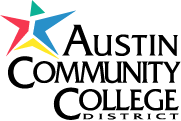Work is underway to reorganize Austin Community College programs and services to make it easier for students to select the coursework best suited to their goals and stay on track to earn a credential.
Administrators, deans, and department chairs have begun determining how best to implement a guided pathways model based on recommendations by ACC’s Futures Institute and input from students and other college constituencies.
“It’s an exciting time, and we’re looking forward to putting our ideas into action,” says Dr. Charles Cook, executive vice president and provost. “As we’ve said, this will be an iterative process that requires continuous evaluation and adjustments along the way. We expect the full implementation of this structure to take several years. We’ll continue to draw upon the suggestions and feedback from our faculty and staff during the process.”
In December Futures Institute members―24 faculty, staff, and students charged with researching best practices in guided pathways―presented recommendations to improve students’ experience in the focus areas of connection, entry, progress, and completion.
As a first step, the college has identified the following 10 areas of study under which degree plans will be clustered. The categories are based on input from the Futures Institute, deans, and department chairs, and reflect federal and state program taxonomies:
- Arts, Digital Media, and Communication (includes Fine Arts)
- Business
- Computer and Information Sciences
- Culinary, Hospitality, and Tourism
- Education and Social Services
- Health Sciences
- Liberal Arts (includes Humanities, Social and Behavioral Sciences)
- Manufacturing, Construction, and Applied Technologies
- Public Services
- Science, Engineering, and Math
In the coming weeks, deans and department chairs will assign programs to areas of study and map coursework across programs. Related services and processes, including student enrollment and advising, will be structured and delivered in a way that supports and complements the areas of study.
Dr. Cook noted that the areas of study do not necessarily reflect administrative structure. For example, a large area of study such as Liberal Arts may be led by more than one dean; other areas might be combined under one dean.
Additional details about implementation plans are included in the Futures Institute report. Access the report, learn more about guided pathways, and view input gathered by the Futures Institute team on the Futures Institute website.
Tags: futures institute, guided pathways, student success
Back to Top
